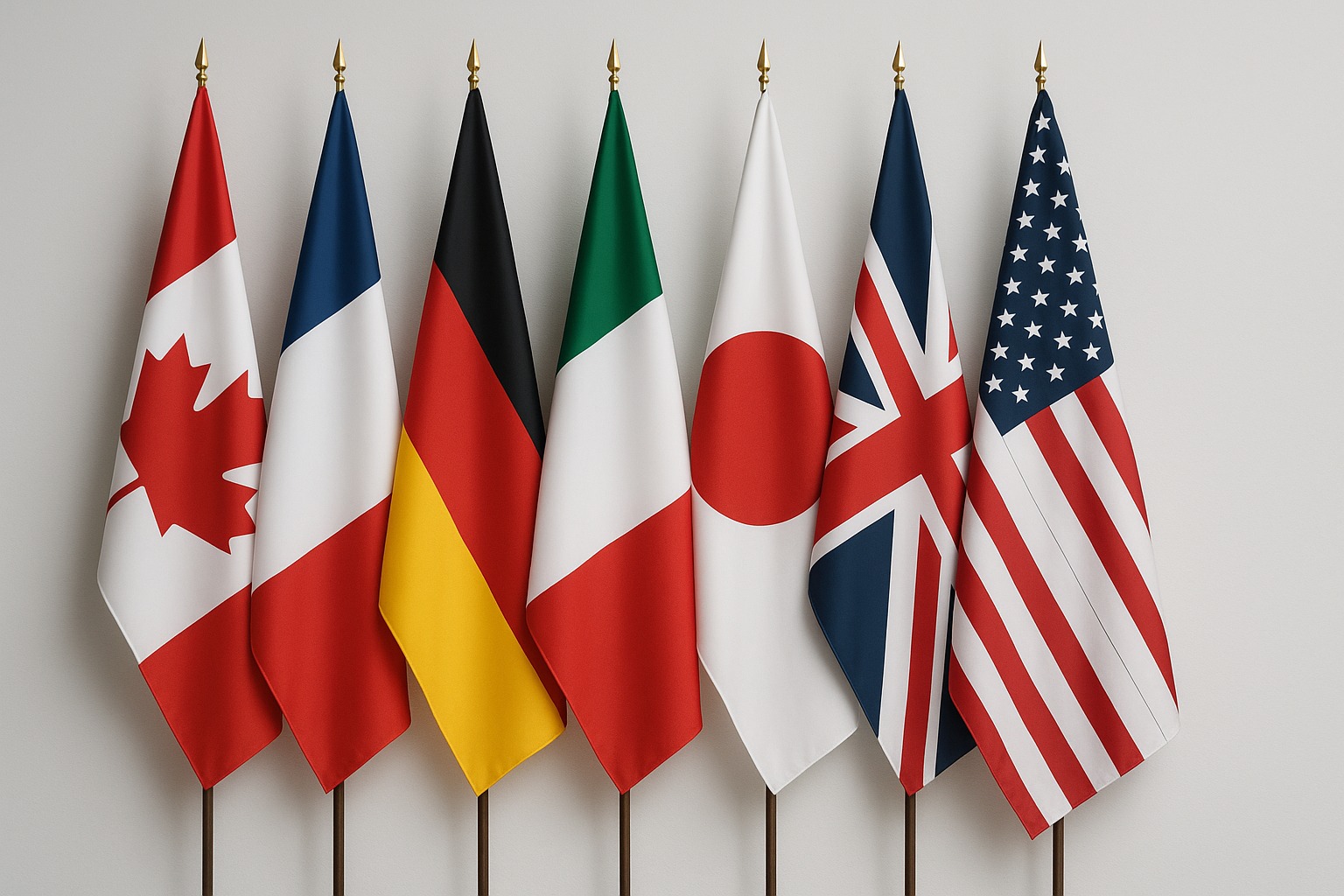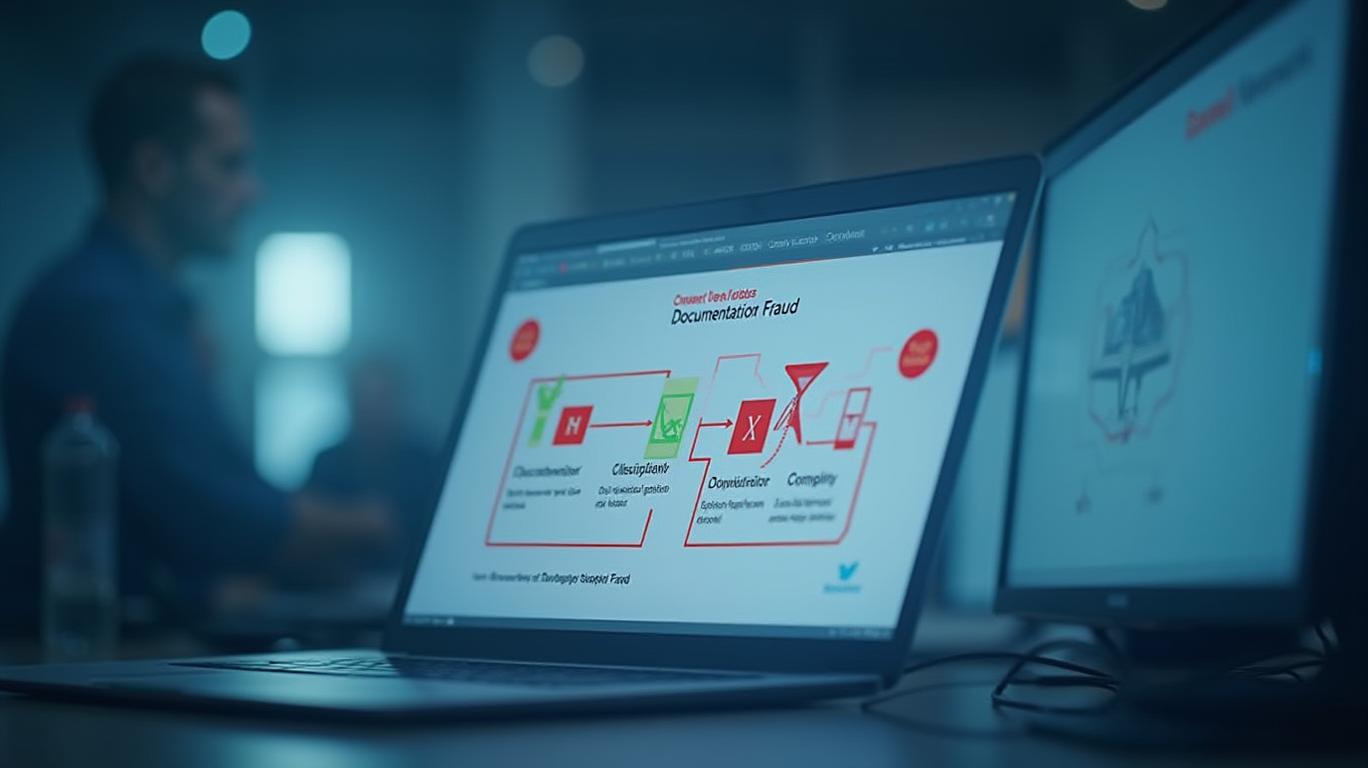Aerospace Firms Scour Contracts Over Tariffs After Supplier Challenge
Monday, Apr 7, 2025 5:20 pm ET
The aerospace industry, a global network of suppliers, manufacturers, and airlines, is grappling with a new challenge: tariffs. The recent declaration by U.S. supplier Howmet Aerospace of a "force majeure event" due to U.S. President Donald Trump's tariffs has sparked a debate over who should bear the cost of these trade disruptions. This move by Howmet, which makes engine parts, fuselage fasteners, and other critical components, has sent shockwaves through the industry, forcing companies to scour their contracts to determine their exposure to these tariffs.

The aerospace supply chain is a delicate web of interdependencies, where a single missing component can halt production. As Jefferies analyst Sheila Kahyaoglu noted, "Howmet has made a chess move, declaring force majeure and threatening to halt shipments. We all know it takes just one nut or bolt to stop the ... supply chain.” This threat underscores the leverage that suppliers hold in this industry, where the cost of disruption can be astronomical.
The tariffs, which include a 20% levy on European Union products such as Airbus planes, are expected to put significant pressure on the industry. The potential for EU retaliation against U.S.-based Boeing adds another layer of complexity. The industry has broadly operated under a 1979 treaty on zero-duty trading in aerospace, but this treaty does not include Mexico, a key player in the supply chain.
The impact of these tariffs is not just financial; it is also operational. The industry is already facing supply chain inefficiencies, workforce disruptions, and inflationary pressures. The tariffs could exacerbate these issues, leading to further delays and increased costs. As Bertrand Grabowski, an aviation adviser, noted, "By definition, aviation is a global market for both buyers and sellers. When you introduce friction like this for such large sums of money, you have instant chaos, not only for airplanes but also for engines and multiple spares from avionics to seats."
The industry is now at a crossroads. Planemakers like Airbus and Boeing hold significant leverage over suppliers, as they control access to next-generation aircraft programs. This leverage could be used to negotiate tariff costs in exchange for participation in these programs. However, this also means that suppliers may have to balance short-term tariff disputes with long-term access to high-value contracts.
The financial and operational risks for aerospace firms are significant. Absorbing tariff costs could lead to margin erosion, cash flow strain, and supply chain disruptions. Firms may be forced to divert funds from production scaling to cover these costs, worsening delays and backlogs. The Airbus A321XLR assembly, for example, could face delays if key components are tariff-affected.
In response to these challenges, firms are likely to prioritize investments in supply chain resiliency and technology-driven cost optimization. Deloitte’s 2025 outlook stresses that firms are prioritizing "resiliency and visibility" in supply chains. This could involve nearshoring or reshoring production, diversifying suppliers, and adopting AI and digital tools to enhance efficiency.
The industry is also likely to see a shift in investment strategies. Firms may pivot investments toward defense contracts, which have steadier funding, away from commercial sectors burdened by tariffs. However, this could also mean delayed innovation and R&D, as cash is diverted to cover tariff costs.
The aerospace industry is at a critical juncture. The tariff disputes are forcing firms to restructure partnerships, diversify supply chains, and accelerate technological innovation. The outcome will likely reshape global aerospace collaboration, with companies prioritizing self-sufficiency and adaptive strategies over traditional reliance on transatlantic partnerships. The industry must navigate these challenges with a keen eye on both short-term costs and long-term strategic investments.










𝙸 𝚑𝚘𝚙𝚎 𝚢𝚘𝚞’𝚛𝚎 𝚍𝚘𝚒𝚗𝚐 𝚠𝚎𝚕𝚕. 𝙸 𝚠𝚊𝚗𝚝𝚎𝚍 𝚝𝚘 𝚙𝚎𝚛𝚜𝚘𝚗𝚊𝚕𝚕𝚢 𝚛𝚎𝚊𝚌𝚑 𝚘𝚞𝚝 𝚋𝚎𝚌𝚊𝚞𝚜𝚎 𝚠𝚎’𝚛𝚎 𝚌𝚞𝚛𝚛𝚎𝚗𝚝𝚕𝚢 𝚠𝚒𝚝𝚗𝚎𝚜𝚜𝚒𝚗𝚐 𝚊 𝚙𝚒𝚟𝚘𝚝𝚊𝚕 𝚖𝚘𝚖𝚎𝚗𝚝 𝚒𝚗 𝚝𝚑𝚎 𝚌𝚛𝚢𝚙𝚝𝚘 𝚖𝚊𝚛𝚔𝚎𝚝 𝚝𝚑𝚊𝚝 𝚢𝚘𝚞 𝚜𝚒𝚖𝚙𝚕𝚢 𝚌𝚊𝚗’𝚝 𝚊𝚏𝚏𝚘𝚛𝚍 𝚝𝚘 𝚖𝚒𝚜𝚜. 𝙱𝚒𝚝𝚌𝚘𝚒𝚗 𝚒𝚜 𝚌𝚞𝚛𝚛𝚎𝚗𝚝𝚕𝚢 𝚜𝚒𝚝𝚝𝚒𝚗𝚐 𝚊𝚝 75𝚔, 𝚊𝚗𝚍 𝚊𝚕𝚕 𝚜𝚒𝚐𝚗𝚜 𝚙𝚘𝚒𝚗𝚝 𝚝𝚘 𝚊 𝚜𝚝𝚛𝚘𝚗𝚐 𝚌𝚕𝚒𝚖𝚋—𝚙𝚘𝚝𝚎𝚗𝚝𝚒𝚊𝚕𝚕𝚢 𝚝𝚘 100𝚔 𝚘𝚛 𝚎𝚟𝚎𝚗 150𝚔 𝚒𝚗 𝚝𝚑𝚎 𝚗𝚎𝚊𝚛 𝚏𝚞𝚝𝚞𝚛𝚎.
𝚃𝚑𝚒𝚜 𝚒𝚜 𝚎𝚡𝚊𝚌𝚝𝚕𝚢 𝚝𝚑𝚎 𝚔𝚒𝚗𝚍 𝚘𝚏 𝚖𝚘𝚖𝚎𝚗𝚝 𝚜𝚖𝚊𝚛𝚝 𝚒𝚗𝚟𝚎𝚜𝚝𝚘𝚛𝚜 𝚠𝚊𝚒𝚝 𝚏𝚘𝚛.
𝚄𝚗𝚕𝚒𝚔𝚎 𝚝𝚛𝚊𝚍𝚒𝚝𝚒𝚘𝚗𝚊𝚕 𝚜𝚝𝚘𝚌𝚔𝚜, 𝚠𝚑𝚒𝚌𝚑 𝚌𝚞𝚛𝚛𝚎𝚗𝚝𝚕𝚢 𝚘𝚏𝚏𝚎𝚛 𝚖𝚒𝚗𝚒𝚖𝚊𝚕 𝚛𝚎𝚝𝚞𝚛𝚗𝚜 𝚞𝚗𝚕𝚎𝚜𝚜 𝚢𝚘𝚞’𝚛𝚎 𝚒𝚗𝚟𝚎𝚜𝚝𝚒𝚗𝚐 𝚕𝚊𝚛𝚐𝚎 𝚜𝚞𝚖𝚜, 𝚌𝚛𝚢𝚙𝚝𝚘𝚌𝚞𝚛𝚛𝚎𝚗𝚌𝚢 𝚘𝚏𝚏𝚎𝚛𝚜 𝚑𝚒𝚐𝚑-𝚢𝚒𝚎𝚕𝚍 𝚘𝚙𝚙𝚘𝚛𝚝𝚞𝚗𝚒𝚝𝚒𝚎𝚜—𝚎𝚜𝚙𝚎𝚌𝚒𝚊𝚕𝚕𝚢 𝚠𝚑𝚎𝚗 𝚢𝚘𝚞’𝚛𝚎 𝚠𝚘𝚛𝚔𝚒𝚗𝚐 𝚠𝚒𝚝𝚑 𝚝𝚑𝚎 𝚛𝚒𝚐𝚑𝚝 𝚐𝚞𝚒𝚍𝚊𝚗𝚌𝚎 𝚊𝚗𝚍 𝚝𝚘𝚘𝚕𝚜. 𝚃𝚑𝚎 𝚖𝚊𝚛𝚔𝚎𝚝 𝚒𝚜 𝚊𝚌𝚝𝚒𝚟𝚎, 𝚝𝚑𝚎 𝚖𝚘𝚖𝚎𝚗𝚝𝚞𝚖 𝚒𝚜 𝚜𝚝𝚛𝚘𝚗𝚐, 𝚊𝚗𝚍 𝚝𝚑𝚒𝚜 𝚒𝚜 𝚢𝚘𝚞𝚛 𝚌𝚑𝚊𝚗𝚌𝚎 𝚝𝚘 𝚝𝚊𝚔𝚎 𝚊 𝚛𝚎𝚊𝚕 𝚙𝚘𝚜𝚒𝚝𝚒𝚘𝚗 𝚋𝚎𝚏𝚘𝚛𝚎 𝚝𝚑𝚎 𝚗𝚎𝚡𝚝 𝚜𝚞𝚛𝚐𝚎.
𝚈𝚘𝚞’𝚛𝚎 𝚗𝚘𝚝 𝚍𝚘𝚒𝚗𝚐 𝚝𝚑𝚒𝚜 𝚊𝚕𝚘𝚗𝚎. 𝙸 𝚠𝚘𝚛𝚔 𝚌𝚕𝚘𝚜𝚎𝚕𝚢 𝚠𝚒𝚝𝚑 𝚊 𝚑𝚒𝚐𝚑𝚕𝚢 𝚛𝚎𝚙𝚞𝚝𝚊𝚋𝚕𝚎 𝚎𝚡𝚙𝚎𝚛𝚝, 𝙲ᴀᴛʜᴇʀɪɴᴇ 𝙴. 𝚁ᴜ𝚜𝚜ᴇʟʟ 𝚠𝚑𝚘 𝙸 𝚌𝚘𝚗𝚗𝚎𝚌𝚝𝚎𝚍 𝚠𝚒𝚝𝚑 𝚝𝚑𝚛𝚘𝚞𝚐𝚑 𝙵𝚊𝚌𝚎𝚋𝚘𝚘𝚔. 𝚂𝚑𝚎 𝚑𝚊𝚜 𝚑𝚎𝚕𝚙𝚎𝚍 𝚌𝚘𝚞𝚗𝚝𝚕𝚎𝚜𝚜 𝚙𝚎𝚘𝚙𝚕𝚎 𝚐𝚛𝚘𝚠 𝚝𝚑𝚎𝚒𝚛 𝚒𝚗𝚟𝚎𝚜𝚝𝚖𝚎𝚗𝚝𝚜 𝚌𝚘𝚗𝚜𝚒𝚜𝚝𝚎𝚗𝚝𝚕𝚢, 𝚊𝚗𝚍 𝚝𝚑𝚎𝚛𝚎 𝚊𝚛𝚎 𝚝𝚎𝚜𝚝𝚒𝚖𝚘𝚗𝚒𝚊𝚕𝚜 𝚊𝚕𝚕 𝚘𝚟𝚎𝚛 𝚜𝚘𝚌𝚒𝚊𝚕 𝚖𝚎𝚍𝚒𝚊 𝚜𝚙𝚎𝚊𝚔𝚒𝚗𝚐 𝚝𝚘 𝚑𝚎𝚛 𝚛𝚎𝚜𝚞𝚕𝚝𝚜. 𝙸’𝚟𝚎 𝚙𝚎𝚛𝚜𝚘𝚗𝚊𝚕𝚕𝚢 𝚜𝚎𝚎𝚗 𝚑𝚎𝚛 𝚜𝚒𝚐𝚗𝚊𝚕𝚜 𝚍𝚎𝚕𝚒𝚟𝚎𝚛 𝚛𝚎𝚊𝚕, 𝚍𝚊𝚒𝚕𝚢 𝚙𝚛𝚘𝚏𝚒𝚝𝚜.